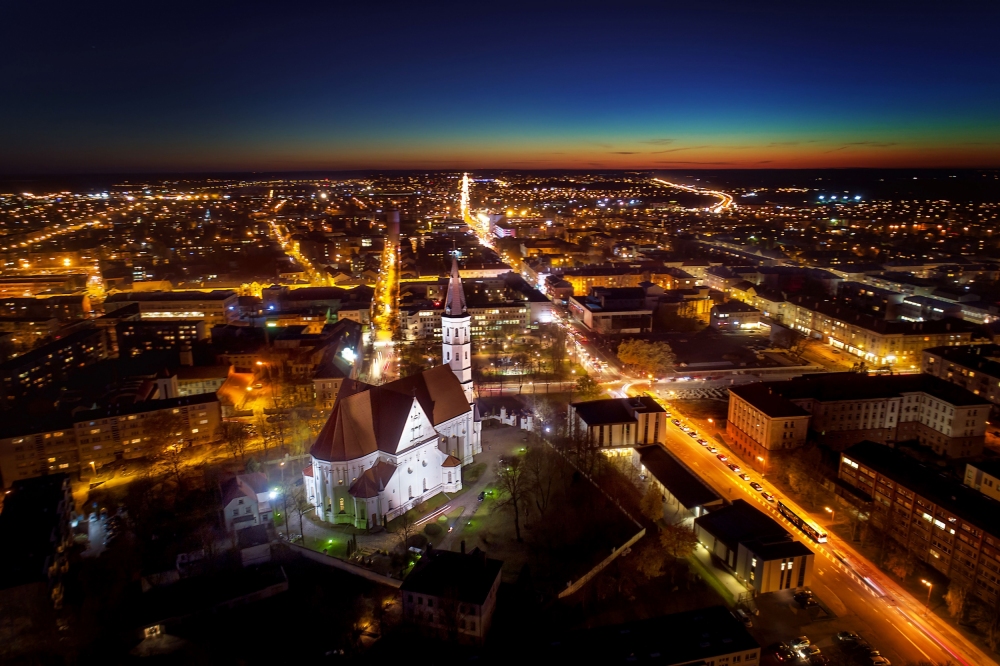Šiauliai district is located in the north-western part of Lithuania. Šiauliai is the fourth largest city in the country according to the population. Šiauliai is an important economic and communication centre with Šiauliai University operating. Position of Šiauliai in relation to international transport corridors is rather convenient, especially in relation to the meridian corridors – 1A corridor “Via Hanseatica”. Within the Lithuanian urbanistic context, position of Šiauliai city is also good – the city is in the middle of the country, it has the airport, railway and etc., Riga is nearby. The mobility of residents is stressed via prism of the city infrastructure, forming premises for the improvement of transportation systems in the city, new transportation means that could facilitate journeys inside the city, but also ensuring connections with suburbs or other settlements and cities.
Due to the increasing territorial expansion of the city as well as the transport mobility, it becomes difficult to ensure the accessibility of separate objects on foot or by bicycles, therefore greater role is given to the public transportation of the city, the effect of which to the environment together with energy demand is relatively lowest. Public transportation of the city is an inseparable part of the social support for residents that is given/received in the form of benefits for transportation. The city's public transportation network is formed considering the normative access of distance to bus stops. Public transport infrastructure has a major impact on the flow of passengers, image of the public transportation as well as on its attractiveness. The number of public transport vehicles servicing the public transportation routes determine the possible frequency of routes; their age determines the level of comfort and residents' preference to use public transport. New public transport vehicles are better accessible to disabled people. Speed of public transportation directly affects the journey's duration; this is one of the main factors upon selection of the mode of transportation.
In addition Šiauliai is rather favourable for the development of bicycle transport due to an even surface, compact planning and small distances between the main objects of attraction together with tradition of using bicycles. Currently the bicycle transport has been reviving in the city. Šiauliai and its suburbs have approximately 56 km of bicycle paths; their network is constantly developed. New bicycle paths are set-up and established according to the Scheme of Development of Bicycle Transport in Siauliai City, confirmed by the city Council. According to it, 60 km of new bicycle paths with parking spaces for bicycles are to be set-up and established in the city. It is also planned to initiate an electronic bicycle rent system.
In summary Šiauliai has high ambitions and aims for transportation development, linked with fostering healthy lifestyle among citizens (by encouraging walking on foot, use of non-engine aids of transportation in case of short journeys). The city infrastructure is built in order to attain this aim together with the system, and is able to integrate the mentioned aids into the joint city transportation system. This would enable the optimisation of transportation flows; this is important upon assessment of uneven distribution of city residents (the majority of residents live in residential areas and go to work in other areas): respective planning of their everyday routes (corresponding to available possibilities (infrastructural, information) ensures the convenience of transportation and this affects the formation of a positive city image.
Key findings of SWOT
Šiauliai has many different means of transport, making it possible to form a combined system of transport towards more sustainable mobility.
Modern IT solutions (intelligent traffic-lights etc.) enable the control of traffic flows and provide possibilities of giving priority to non-engine, electric transport or public transport, therefore their use is to be encouraged.
Number of public transportation passengers could be increased by offering more frequent route intervals. The long waiting time or inconvenient change lead to the increased duration of the journey, therefore public transportation connections become uncompetitive when compared to journeys by private vehicles.
Attractive solutions concerning the journey planning, pricing, ticketing should be adapted, in order to maintain a high use of public transportation.
It is worth considering introducing the common ticket system, that in addition to the public transportation system could also include rent of non-engine transportation, parking, places of interest and other systems.

